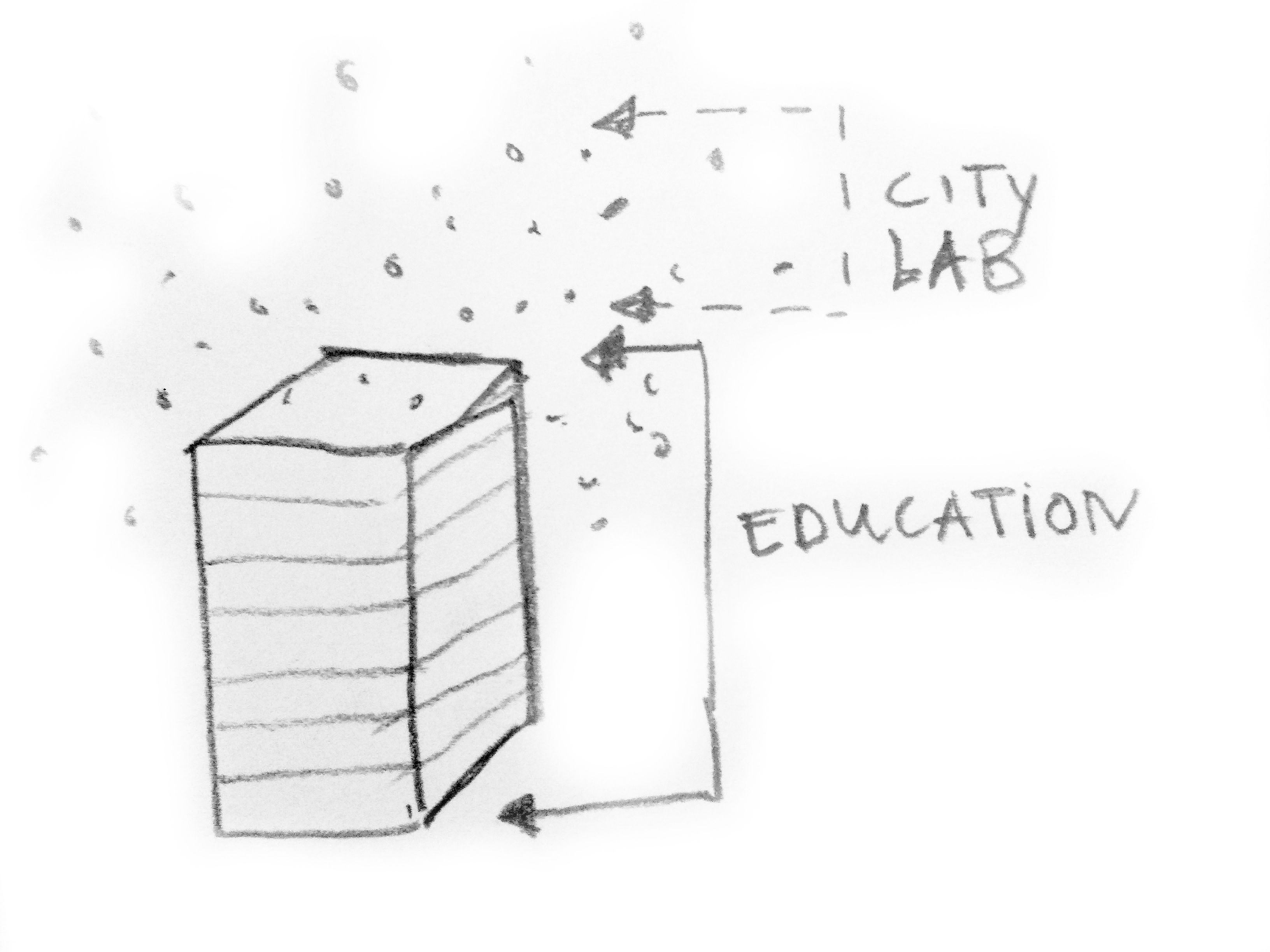>>> NEXT CHAPTER <<<PREVIOUS PAGE >TABLE OF CONTENTS<
2.7 PEDAGOGICAL FRAMEWORK
These circumstances surrounding the new practice of a designer who assumes the role of a Pro-Am within the setting of a city lab concerning ecological problems have a consequence for the pedagogical framework within design education.
Before answering the question of what this ‘critical framework’ is and its implications, there first needs to be an understanding of how to educate designers for this changing new practice.
TRAINED TO BE EXPERTS
The notion of ‘Pro-Ams’ vs. multidisciplinary is relevant in the context of education. As Verweij stated, that designers shouldn’t be educated as multidisciplinary designers, because otherwise it will hollow out the design profession itself is a true point. The designer is able to relate to these wicked problems because they are educated to be professional designers (specific experts in their knowledge field), including expert knowledge with regard to ecology. Future designers should be educated as professionals with ecology in their DNA.
LAB AS A PLACE FOR LEARNING
In order to adapt to the changing practice, students need to ‘learn’ how to become ‘Pro-Am’. With regard to this research, Buckminster Fuller is an inspiration. In his view on education in the 1960s, ‘experience’ played a central role and could accelerate inventions that generated a sustainable future. He talked in ‘Education Automation’ (1962) about the innate capabilities humans have to learn and experiment in order to gain knowledge. Having a love (amator) for a topic is an innate capability we as humans have and nurture. This innate capacity gets lost in design education. Fuller was connecting information/knowledge to a wide audience (lovers/amateurs). A networked society could easily share information and create an increasing amount of knowledge, then connect this to academic education. This could accelerate inventions regarding ecology. He described the potential towards ecological issues as the fluid situation where the ‘world’ and the ‘academy’ merge into each other.
Rancière called the situation of learning outside the institutional framework ‘universal teaching’. He argued that if the ‘ignorant’ is “emancipated, he could conduct the education of his children, without the aid of any master explicator and—one could teach what one didn’t know.” (Rancière 1991, p.15-18) This ‘universal teaching’ is needed in order to create the urgently needed unique individual knowledge where the ‘learned’ and ‘the ignorant’ are equally valued.
Learning networks (city labs) can be considered as learning outside the institution and have the pedagogical framework of ‘universal teaching’. However, in order to allow students to have this as a canvas, they need to be ‘emancipated’. This ‘emancipation’ could be implemented in a critical framework and applied within design education.

Education constructs Experts. City Labs facilitate becoming a Pro-Am in a new field of interest through experience-based learning to. Drawing Piscaer May 2017
CONCLUSION
The academy should educate for expert designers with an ecological mind-set in their DNA. In addition, it requires adding a fluid boundary between the academy and ‘the outside world’. This means opening up the academy to ‘the others’ and actively facilitating students to go and experience ‘in the world’ within a setting of a lab. It creates a canvas for ‘universal teaching’. The academy should play a vital role in creating learning networks /labs in co-creation with society. The academy should incorporate a critical framework into its curriculum.
>>> NEXT CHAPTER <<<PREVIOUS PAGE >TABLE OF CONTENTS<
